Saree is an artist’s vision; draping it is another tale. Singhania’s brings to you a guide that gives you the vision to style your saree in the most graceful way ever. A saree is a versatile clothing that doesn’t require much; it is just a woman who can drape it elegantly and flaunt the pallu effortlessly. You can wear a saree at formal events, intimate ceremonies, and weddings. This attire encapsulates a unique look each time you drape it differently. Talking about drapes, the styles vary endlessly. Each reaches an accomplishment when you do it perfectly. Saree wearing style does not only depend on the occasion but your level of comfort as well.
The Popularity of Different Saree Styles Over The Years
The saree is a traditional Indian attire that has endured the test of time. One of the key factors for its popularity is its ability to adapt. The saree can be draped in several fashions and looks. It is appropriate for a variety of events since it may be worn casually, elegantly, or formally. The Indian saree-wearing style versatility encompasses the ability to compliment various body types. Also, the saree is available in an extensive selection of materials, colours, and styles to suit individual tastes and cultural diversity across India. This wide variety of choices adds to its appeal and assures that there are different saree draping styles for every event and personal taste. Aside from its adaptability, the saree holds cultural and personal significance in India. It has long been rooted in Indian traditions and is frequently viewed as an expression of elegance and femininity. The saree is more than simply an attire; it is a part of Indian custom and illustrates the country's huge cultural variety. It is worn during festivals, weddings, and other special occasions to represent tradition and customs. Additionally, the saree look has transcended regional boundaries and has become a unifying element among diverse communities in India. It is worn by women from different states, each showcasing their unique draping styles and regional variations. This cultural significance and emotional attachment associated with the saree style contribute to its enduring popularity and make it an integral part of Indian identity.
Importance Of Draping a Saree Properly for An Elegant Look

Wrapping a saree is an art. While you are wondering how to drape a saree gracefully, it all lies in the steps. As you achieve all the pleats, folds, and wraps perfectly, you will exude an elegant look. Once you gain confidence in saree tying and draping, you will look like perfection. Draping a saree properly is of utmost importance to achieve an elegant and graceful look. The art of saree draping involves skill and precision, as the way it is draped can greatly impact the overall appearance of the wearer. A well-draped saree look enhances the body's natural curves and creates a flattering silhouette.
How to Drape Saree Perfectly?
It is crucial to ensure that the saree pallu pleats are neatly arranged and evenly distributed, as they add structure and definition to the drape. The pallu, or the loose end of the saree, should be elegantly arranged over the shoulder and allowed to fall gracefully, adding a touch of femininity and sophistication. The way the saree is draped also plays a role in the comfort and ease of movement of the wearer. A properly draped saree allows for freedom of movement, ensuring that the pleats and pallu do not come undone or cause discomfort. It is important to choose the right fabric and ensure that the saree is draped securely to prevent any wardrobe malfunctions. Additionally, draping a saree properly showcases the craftsmanship and design of the saree itself. Different draping styles highlight different aspects of the saree, such as intricate borders or embellishments. It enables the wearer to showcase the saree's unique features and make a statement with their choice of apparel. Finally, properly draping a saree is vital for a perfect formal saree look since it enhances the body's natural curves, gives comfort and ease of movement, and highlights the beauty of the saree itself. “Party wear saree kaise pahne” ringing in your head? It's a skill that can be learnt and perfected, adding to the overall attractiveness and elegance of this traditional Indian outfit.
Preparing For Saree Draping
Choose the right saree for the occasion:
The first thing to remember while learning how to drape a saree is selecting the right attire. If you are dressing up for a special occasion, wear a Kanjivaram or Bandhani silk saree. For casual or formal office days, you can pick out a cotton or georgette saree for a subtle look.
1. Consider the occasion: Decide whether you are draping the saree for a formal event, a casual gathering, or a traditional ceremony. This will help you determine the appropriate saree style, fabric, and embellishments.
2. Select the fabric: Choose a fabric that suits the weather and the occasion. Silk, chiffon, georgette, and cotton are some popular choices. Keep in mind the drape and fall of the fabric when making your selection.
3. Pick the colour and design: Consider your skin tone, body shape, and personal preferences when choosing the colour and design of the saree. Opt for colours and patterns that flatter your complexion and highlight your features.
Select a matching blouse and petticoat:
The key lies in matching everything. You can pick any fabric saree, but if the blouse and petticoat don’t match, your efforts might go in vain. Remember to match them before wrapping a saree.
1. Coordinate the colours: Choose a blouse and petticoat that complement the colour of your saree. You can either opt for a matching colour or select contrasting shades that create an interesting visual appeal.
2. Consider the style: Decide on the blouse style that suits your body type and the saree's design. You can choose from various necklines, sleeve lengths, and back designs. Make sure the blouse fits you well and provides the necessary support.
3. Get the right petticoat: Select a petticoat that matches your saree in terms of colour and fabric. The petticoat should fit you comfortably and be of an appropriate length to maintain the saree's drape.
Ensure you have safety pins and other necessary accessories handy:
Once you start to drape a saree step by step, you want to have all the things handy. Searching for accessories like safety pins, belts, and brooches shouldn’t be left for the last minute.
1. Gather safety pins: Keep a handful of safety pins in different sizes to secure the pleats and pallu (the loose end of the saree) while draping. These pins will help keep your casual saree look in place throughout the day.
2. Arrange other accessories: Prepare other necessary accessories such as bobby pins, hair ties, and a waistband to hold the pleats in place and pin up the saree securely. Additionally, consider any jewellery, footwear, or makeup you plan to wear with your saree and have them ready. With these steps, you'll be well-prepared to start draping your saree fitting with ease and confidence and rock a flowing pallu saree.
Easy Saree Draping Tips and Steps
Step 1: Tying the inner petticoat and securing the waist

The first step to draping a saree for beginners and even experts is to take care of your petticoat. Ensure that it is tightly secured on the side and doesn’t slide.
Step 2: Tucking the plain end of the saree

The next step is to tuck your saree’s plain end into the petticoat. It is from where you will begin wrapping the fabric.
Step 3: Making the pleats and securing them at the waist
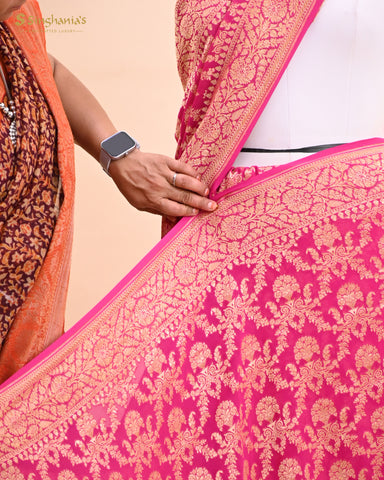
For secure and tight saree draping, make equal-length pleats and secure them at the waist. Make sure that the pleats are formed in such a way that the petticoat isn’t visible.
Step 4: Draping the pleats around the front
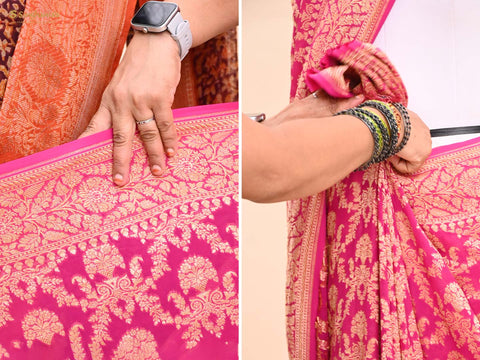
Now, drape the formed pleats at the front to create a synchronised look.
Step 5: Bringing the saree pallu which side (decorative end) over the shoulder
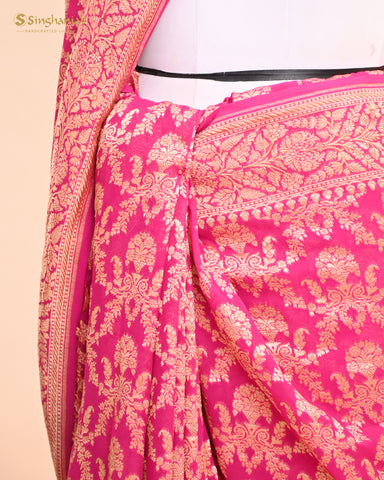
Take the decorative end of your saree and bring it over the shoulder. This will form the pallu, which you can pin up later or let loose. Saree pallu side on the left or right shoulder. Traditionally, the saree pallu is draped over the left shoulder, as it is considered an auspicious and commonly followed saree draping model. However, draping the pallu over the right shoulder is also an option, which can be a variation based on personal preference or regional customs or for a full-covered saree look. Saree pallu, on which side is totally up to you. Saree pallu on the head: Traditional and modern styles: In traditional and ceremonial occasions, the saree draping with pallu on the head can be done and draped like a veil, symbolising modesty and respect. Modern styles also incorporate draping the pallu over the head as a fashion statement or to create a unique and different look in a saree.
Step 6: Adjusting the pallu length and pleats
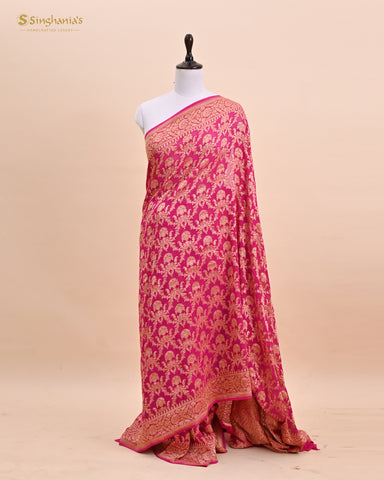
The next step for you is to adjust the length of your pallu and set the pleats accordingly. Make sure that you don’t make the pallu so long that the pleats feel shorter.
Step 7: Securing the pallu with pins
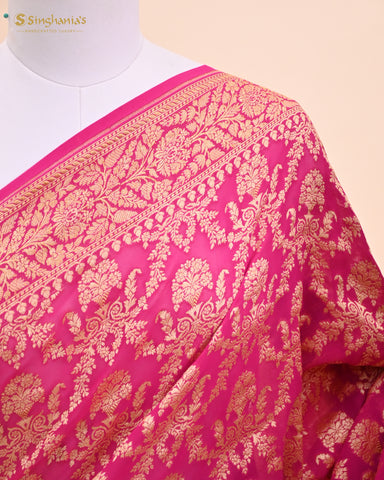
Now, secure the pallu with safety pins. Done! You have learned how to pleat a saree perfectly.
Additional Tips and Variations
You have learned how to tie a saree perfectly, but does the entire nation drape it this way? We know that India is a land of diverse cultures, and saree draping is no different. There are several variations to flaunt your region’s heritage.
Different Saree Draping Styles Across India
Nivi Style of Saree Draping
This is the most commonly used saree draping style, originated in Andhra Pradesh. It displays a pleated saree tucked in the middle of the waistline and draped neatly over your left shoulder. This creates a beautiful flow at the back.
Bengali Style of Saree Draping
The style is appreciated for its elaborate pleats and a draped pallu travelling from the back to the right shoulder.
Maharashtrian Style of Saree Draping
Maharashtrian or Nauvari saree is a forever graceful style. It doesn’t have pleats and the pallu is sophisticatedly tucked at the back.
Gujarati Style of Saree Draping
A Gujarati drape has pleats cluttered at the waist, while the pallu is set across the right shoulder.
Tamilian Style of Saree Draping
Tamilian retro saree style has minimal pleats with pallu tucked over the left shoulder. It focuses on the borders.
Kerala Style Saree Draping
Kerala’s saree draping is called Mundum Neriyathum, and two cloth pieces are draped distinctively. The lower piece is tucked at the waist, while the upper piece is styled as a pallu.
Experimenting with types of saree pallu styles
When we talk about stylish saree wearing, pallu plays a significant role in enhancing your look.
Butterfly Pallu Saree Draping Style
This is where you pleat the pallu and arrange it to replicate a butterfly’s wings. This creates a voluminous effect.
Seedha Pallu Saree Draping Style
This is one of the most common ways of styling a pallu. It takes the pallu over the right shoulder with not many pleats.
Double Pallu Saree Draping Style
In this saree draping style, you use two pallus to add a royal touch to your attire. It is commonly seen in Kanjivaram sarees.
Fallen Pallu Saree Draping
It is when you want to let the pallu flow and not worry about tucking the saree on the left or right shoulder. This creates a relaxed look.
Styling the Saree with Accessories
Belts for Saree Draping
Add an Indo-Western touch to your attire by pairing your saree with a belt. It accentuates your curves and also gives your ensemble a sophisticated touch.
Brooches for Saree
Use a gold or silver brooch for your saree and create a royal look for your event.
Jackets for a fusion look
If you are not in the mood for old saree looks, elevate your style with a short ethnic jacket.
Shrug on saree
Shrug on a saree sounds like an unusual concept, but it has recently turned into a style statement.
How to drape a saree in a modern or contemporary style?
Dhoti Style Saree Draping
It is where your saree will resemble a dhoti with pleats adjusted at the waistline.
Indo-Western Fusion for Saree Draping
This blends modern and traditional elements of draping a saree.
Pant Style Saree Draping
You can style your saree with trousers or pants instead of the usual petticoat.
Lehenga Style Saree Draping
Your saree drape will replicate a lehenga skirt, and the flared pallu will elegantly swoon over the shoulder.
Mermaid Style Saree Draping
This saree draping exudes the effect of a mermaid’s tail, with the drapes tightly secured around the waist.
Mumtaz Retro Look: Retro Saree Draping Style
Mumtaz saree draping style is where the pleats are secured at the waistline, and pallu flows across your chest. It originated in Indian Cinema adorned by Mumtaz, one of the finest actresses that Bollywood has ever seen.
Net Saree Draping Style
This style focuses on draping your saree in such a way that the net fabric is highlighted elegantly.
Tips for beginners to make the draping process easier
Draping a saree for beginners can be a daunting task. You can do the following to make it simpler:
• Watch saree draping videos to get a complete idea of the technique.
• Drape a saree step by step so that you only proceed when the first step is achieved with perfection.
• Understand whether you want the saree pleats left or right. This will depend on the kind of drape you want.
• Keep accessories handy instead of searching for them at the last moment.
Remember, saree draping is an art, and the best saree-wearing style can be personalised and adapted to suit your preferences and occasion. Explore different styles and ways to drape a saree, be creative, and, most importantly, wear your saree with confidence and grace.
Summarising The Process: How to Tie Saree Perfectly
Let's recap the key saree steps and points covered in this blog to help you how drape a saree in different ways with confidence: We started with the preparations, including choosing the right saree for the occasion, selecting a matching blouse and petticoat, and ensuring you have necessary accessories like safety pins handy. Then we journeyed on how to drape a saree step by step (focused on how to wear a saree step by step with pictures), which involved tying the inner petticoat, tucking the plain end of the saree, making and securing waist pleats, draping the pleats around the front, bringing the pallu over the shoulder, adjusting its length and pleats, and finally securing it with pins.
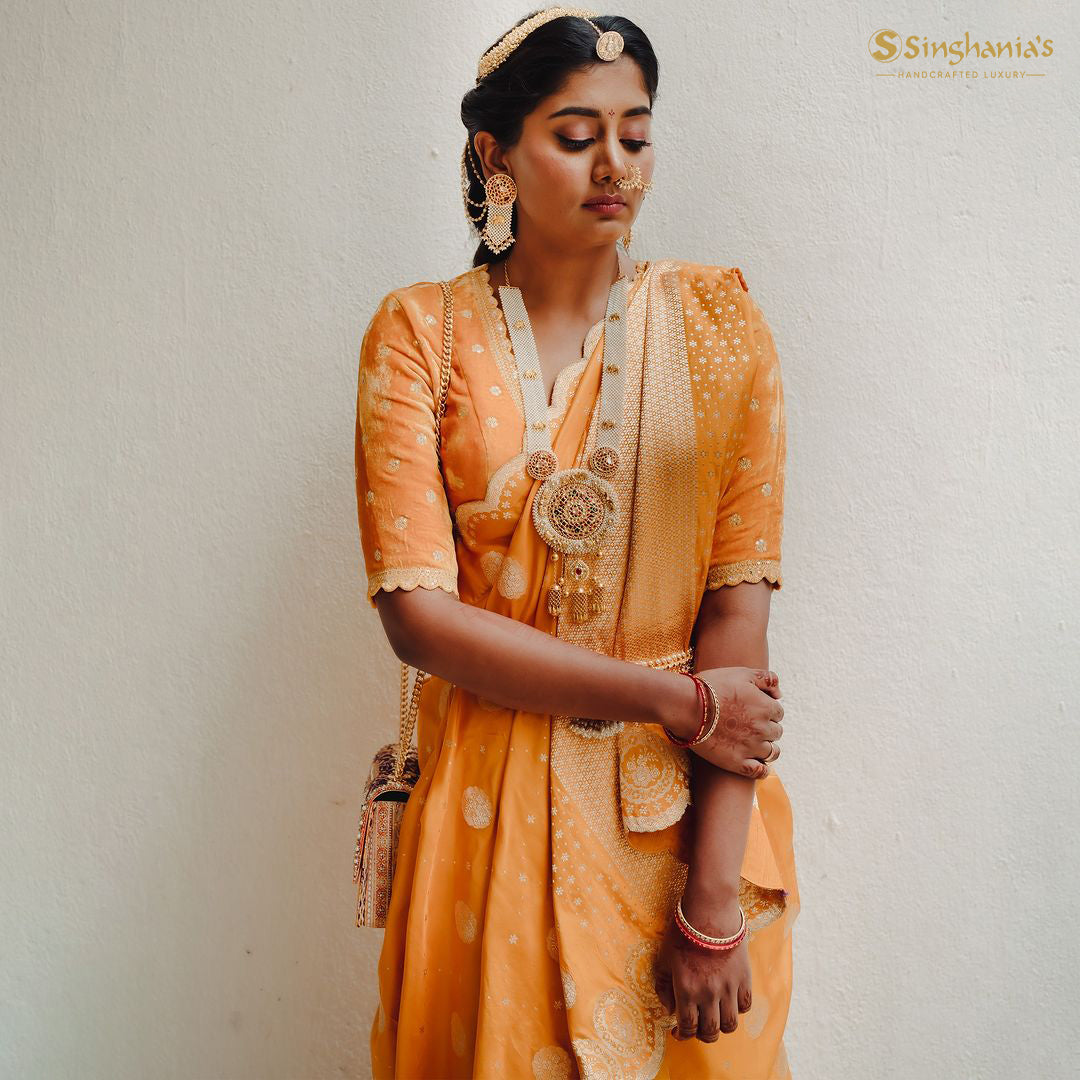
We looked over the significance and variety of draping the saree pallu on the left or right shoulder, as well as the traditional and current techniques of settling the pallu on the head. Additionally, we explored regional draping styles from different parts of India, experimenting with different saree pallu styles, how to wear stylish saree and styling the saree with accessories like belts, brooches, or jackets, draping a saree in modern or contemporary styles, and providing tips for beginners to make the draping process easier.
 Our Stores
Our Stores

